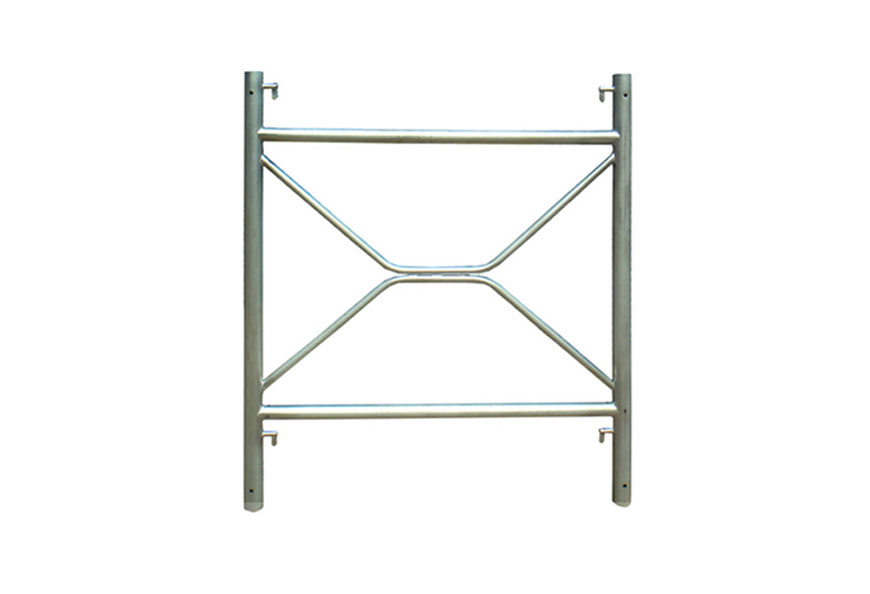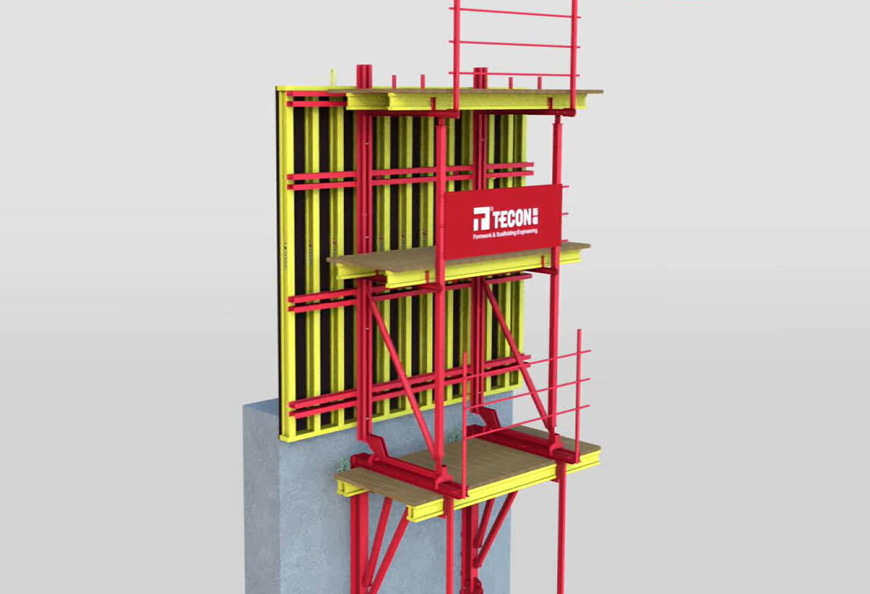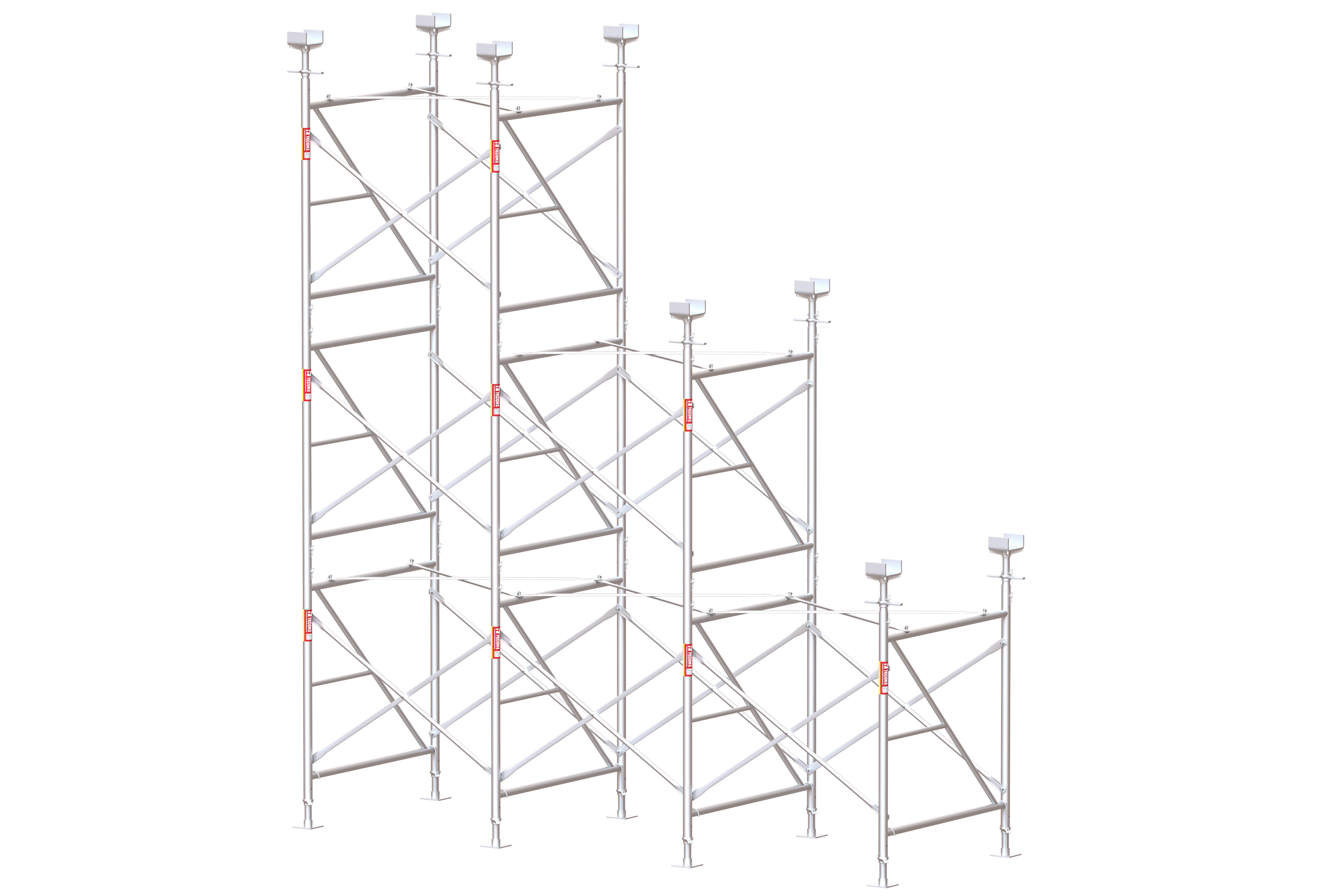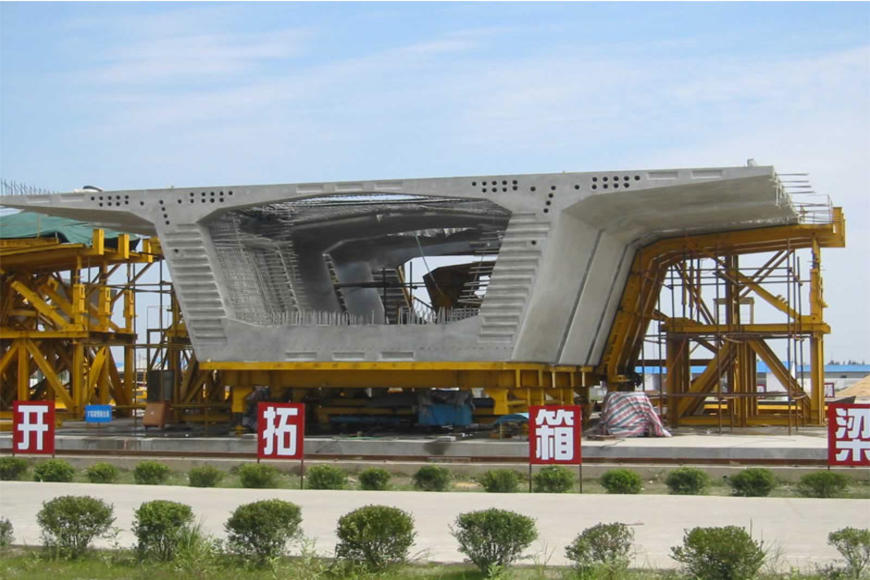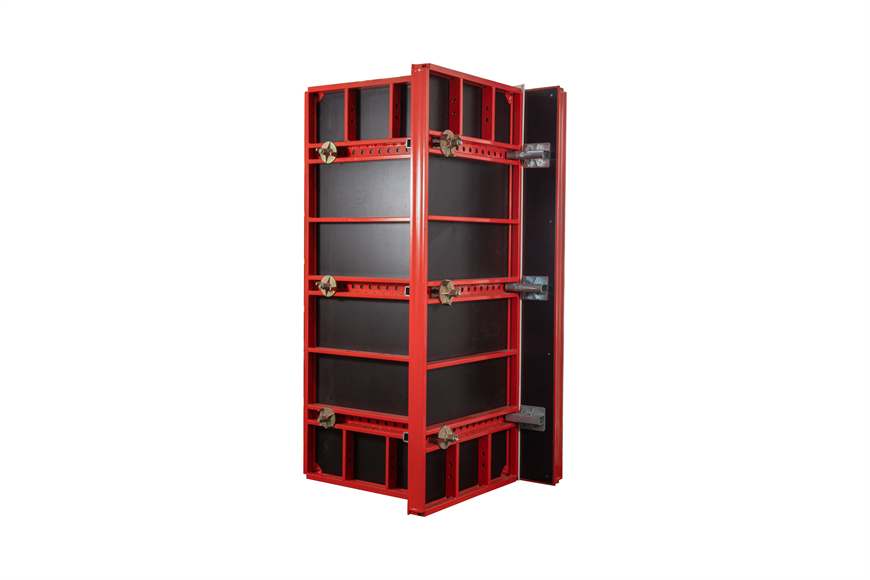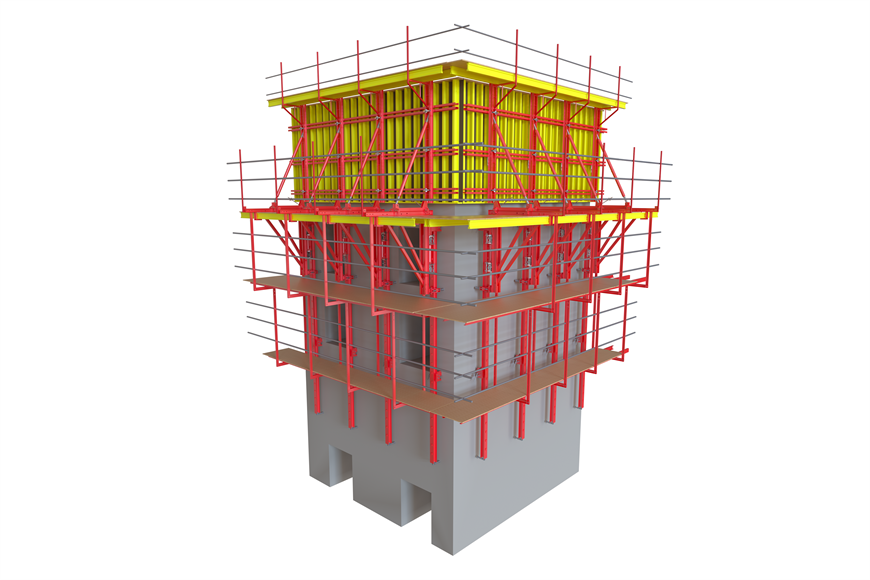The jumping formwork system consists of the lower frame, upper frame, wall-mounted brackets, guide rails, hydraulic cylinder system, formwork, safety barriers, and other components.
The principle of the jumping formwork system is to arrange the machine positions based on the wall conditions. At each machine position, a hydraulic lifting system is set up. The frame is fixed to the embedded climbing cones on the wall through the wall-mounted brackets. During the climbing process, the guide rails are first lifted, and then the frame along with the formwork climbs along the guide rails.
The jumping formwork system is easy to operate, highly safe, and can save a large amount of time and materials.
Once the formwork frame is assembled, it remains in place until the top, saving space on the construction site and reducing the risk of damage to the formwork, especially the panels.
The hydraulic climbing process is smooth, synchronized, and safe.
The jumping formwork system provides a comprehensive operating platform, eliminating the need for reassembling the platform and saving both materials and labor.
Structural construction errors are minimal, and correction is simple, with errors being corrected layer by layer.
The climbing speed of the jumping formwork system is fast, which can improve the construction speed.
The formwork climbs itself, and cleaning is done on-site, significantly reducing the number of crane lifts required.
After the concrete is poured, the formwork is moved backward, the guide rails are lifted, the frame is raised, and the formwork is closed for the next round of concrete pouring.
Before the system climbs, it is essential to check if the concrete wall has reached the required strength for climbing, ensure that the load-bearing bolts are tightened, and confirm the stability of the wall-mounted brackets. Each component of the frame must be checked for disconnections, and the electrical control system and hydraulic system must be inspected for safety and reliability. The sequence of the climbing units must be confirmed.
During the climbing process, the guide rail should be lifted above the lowest wall-mounted bracket. At this point, the wall-mounted bracket and climbing cone should be removed. After the guide rails are in position, verify that they fit seamlessly with the wall-mounted bracket. After one climbing cycle, remove the load-bearing pin, and once the frame is in place, insert the load-bearing pin. After climbing, immediately insert the safety pin.
Once climbing is complete, adjust the upper and lower yokes to the climbing rail position, turn off all switches, and lock the hydraulic device. Confirm that the wall-mounted brackets for each unit are in position, and inspect the connection of the frame components, climbing units, and the safety barriers.
During the climbing process, deviations and twisting may occur. To ensure quality, relevant parts must be measured daily using instruments. If any deviation or twisting is detected, immediate correction should be made.
